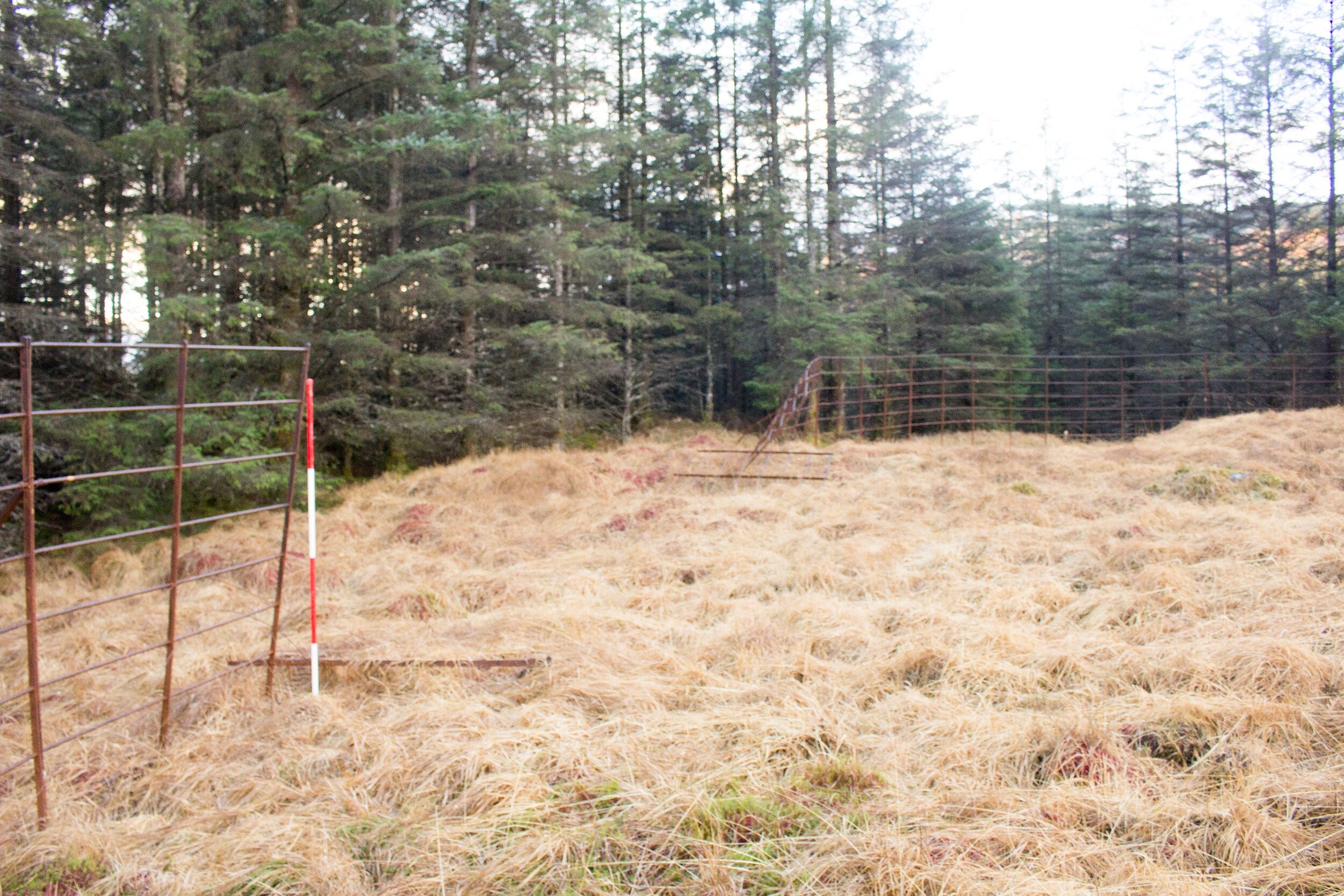Elk in Argyll? Recording the Traces of an Unusual Introduction
This wapiti was photographed in 1898 in a pen in the grounds of Woburn Abbey in Bedfordshire. Richard Lydekker, Public domain, via Wikimedia Commons.
In 2020, AOC’s survey team recorded a Wapiti pen in Glen Orchy, Argyll and Bute, on behalf of Forestry and Land Scotland. This unusual site tells of a surprising twist in the history of Scottish sporting estates.
By the 1880s, sheep prices were dropping due to cheaper imports from Australia and New Zealand. The revenue to be had from shooting was beginning to outweigh that of farms and crofts. In an attempt to increase the body and antler size of hunting trophies of the native red deer, and increase the profit to be made from sporting estates, a small Wapiti population was introduced to Glen Orchy in the late 19th century. Mating between Wapiti males and red deer females was encouraged, and the males were kept in large enclosures or pens.
However, the plan to increase the size of the local red deer was ultimately unsuccessful. The Wapiti didn’t thrive in the wet Scottish climate, suffering from lungworm and foot problems. Moreover, hybrid fawns were too big for the local hinds, and an increasing number of hinds died trying to give birth to larger offspring.
The Glen Orchy pen was likely built between 1970 and 1897. It was 90m by 40m, constructed of iron fence panels with seven rails, standing over 2m high. The fence panels were supported to the outside by S-shaped curved posts. The gate across the entrance to the pen was suspended by a wire which ran across two rollers, allowing the gate to slide open and closed.
The pen was surveyed by AOC on behalf of Forestry and Land Scotland using a Trimble TX5 laser scanner, controlled using spherical targets registered to the Ordnance Survey national grid, and visualised using the innovative WapScale. Explore the 3D model via Sketchfab.









